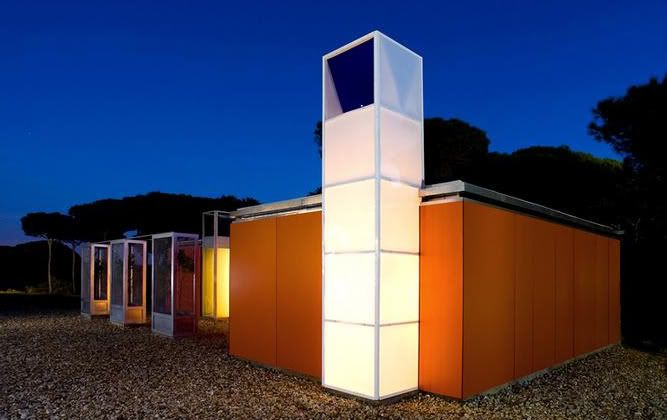
i've been on the move since i was a kid, and migration is one of those subjects that always strikes a sensitive chord. lately i've been trying to follow threads on architectural / design experimentation on the border, for good or bad.
some of the most interesting cases i've come across on subtopia, "a field guide to military urbanism" (and much more, actually). a few months ago i read an old post from july 2006, called "migrant structures". the article dealt with issues of temporary migration and housing/shelter conditions. the focus of the piece was more of a 911 (nine-one-one not nine-eleven, late 80's t.v.) design emergency scenario, playing with ideas for a response to a (sort of) pressing issue. the post ultimately linked to some proposed solutions.
what struck me was the paradox behind all these good intentions. something like let's keep 'em coming, let's keep them temporary and "irregular", but at least give them a nicer place to stay (something we can show in magazines).
well, i've found this double discourse on illegal (undocumented, whatever) immigration is even more blunt in europe, and spain particularly. spaniards have become big suckers for gloss when it comes with a tinge of social concience. and on this particular issue, it seems, southern spain beat southern california:
an easily-dismantaled mini-city for temporary (read: undocumented) farm workers "usually coming from romania, poland, ecuador and morroco, to pick strawberries (them too!) in huelva." the article goes on, describing the same bad living conditions the workers face (makeshift houses, shacks, tents, or even -gasp- the street...). the project proposal is by a fellow by the name of javier terrados, who won a contest held by the colegio de arquitectos of almería (yep, the place that grows freak genetically modified tomatoes on acres and acres of plastic-covered land and that keller easterling wrote about) for "decent" housing.
ejem...
today's back page of el pais is even more explicit: "if the workers come and go, why not put up and dismantle their houses at the same time?"
the thing is, do they? come and go? yes, they're only hired for some months. do they go back to morroco then, or ecuador? or just back to living in shacks until the next job comes up?



1 comment:
nice post, brayan.
yeah, the paradox of improving their conditons through temporary structures and not really getting at any greater more permanent infrastructure, is the crux.
how can we answer both needs: the temporary, nomadic with the permanent and infrastructural progress for migrant workers?
in some cases, all the modern temporary structures only further add to the crisis of their detachment, of their lack of belonging, their disposability.
how can we use the temporary solution to more deeply embed them into the socio-political landscape where they have rights, proper infrastructure, where they are no longer viewed as transient labor but as fixed communities, as a part of the landscape, there to grow and improve with it?
thanks for bringing these other articles and projects to my attention!
bryan
Post a Comment